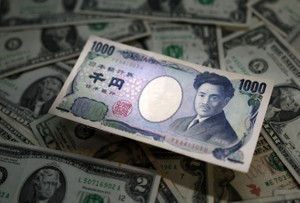By WAKATO ONISHI/ Senior Staff Writer
July 27, 2020 at 19:10 JST
OBUSE, Nagano Prefecture--An extremely rare hand-drawn portrait likely by renowned ukiyo-e woodblock artist Katsushika Hokusai that recently came to light has triggered a quest to identify the man in the picture.
Hokusai (1760-1849) is regarded as one of the greatest ukiyo-e artists of the late Edo Period (1603-1867).
A resident of Gunma Prefecture donated the portrait to the Hokusai Museum here at the end of last year.
Art historian Toshinobu Yasumura, who heads the museum, noted that the drawing carries the artist’s signature and seal and determined it was authentic, judging from the style, sharp outline and the way the man's limbs were depicted.
The portrait apparently was executed by Hokusai in his early 40s, based on kanji characters that state it was done in 1803 in the Japanese imperial era.
Only a few original portraits drawn by Hokusai survive today, according to Shugo Asano, who heads the Museum Yamato Bunkakan in Nara and is well-versed in ukiyo-e.
“It is drawn in a straightforward manner, compared with other portraits (by Hokusai),” said Asano, after viewing a photo of the image. “Since it was drawn relatively early in his career, he had probably yet to establish his style. It is an interesting work.”
Yasumura believes the man in the portrait is a money changer as he holds what appears to be an abacus in one hand. A scale and a book for keeping track of money are also depicted.
Sentences written on the upper part of the portrait say the man’s family name is Kamiyama. But the name of his store and its location are unknown, Yasumura said.
The Hokusai Museum plans to put the portrait on public display at an exhibition scheduled to start from Sept. 5.
“Please provide us with information about the man to determine who he is,” said Yasumura.




















Stories about memories of cherry blossoms solicited from readers
Cooking experts, chefs and others involved in the field of food introduce their special recipes intertwined with their paths in life.
A series based on diplomatic documents declassified by Japan’s Foreign Ministry
A series on the death of a Japanese woman that sparked a debate about criminal justice policy in the United States
A series about Japanese-Americans and their memories of World War II
Here is a collection of first-hand accounts by “hibakusha” atomic bomb survivors.